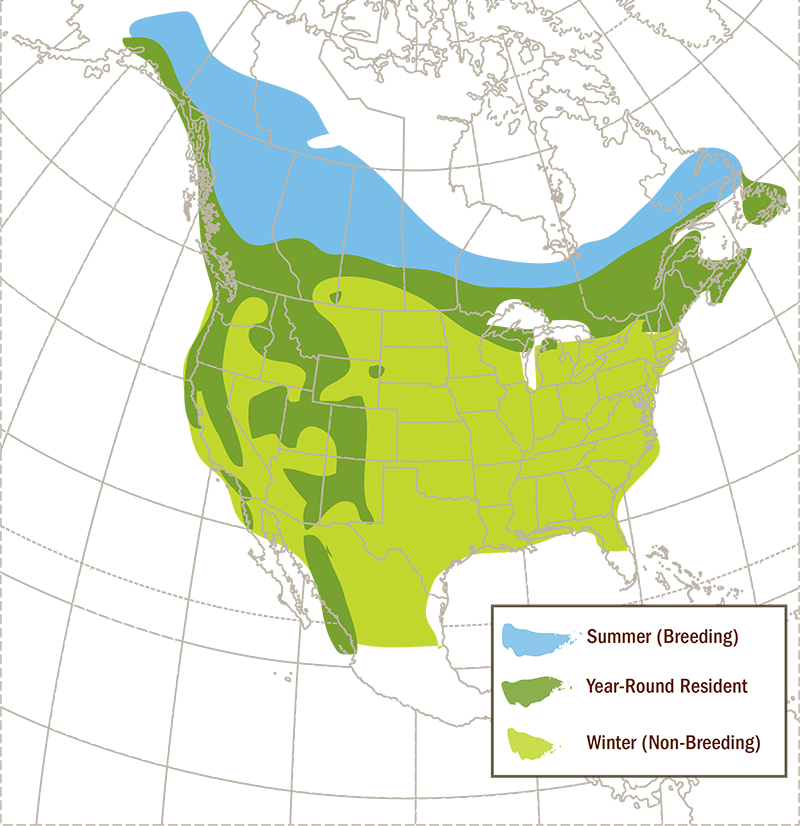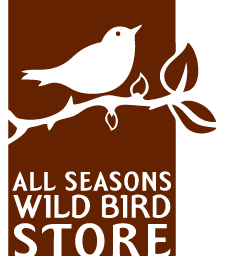Cleverly cloaked as a sparrow, the Pine Siskin is really a finch in disguise.
Like other finches, they have a notched tail. They’re streaky brown overall with subtle yellow edging on their tails and relatively long wings help them blend in with other small songbirds. If you look closely, you can identify them even when they’re mixed in with American Goldfinches at Nyjer®™ feeders. Watch for their sharp, pointed bills—this is the key feature that differentiates them from other finches.
 Range and Migration
Range and Migration
Pine Siskins are an irruptive species. This term alludes to the fact that we may see an influx of Pine Siskins during the winter one year and then not see them for a few years. Their migration south is based on the availability of cone crops in North America. Pine Siskins form flocks year round. They sometimes migrate in flocks of several thousand. The range map depicted here (source: Audubon Field Guide) shows the typical range of Pine Siskins.
Flight & Song Style
Pine Siskins have an undulating flight like other finches. While in flight, they most commonly call out a buzzy, rising zreeeeee. Their songs are a lot like the songs of goldfinches but a little huskier sounding.
Preferred Dining
Small seeds without tough shells—such as Nyjer®™, millet, and hulled sunflower seeds—delight our Pine Siskin friends. They may forage near heavier-beaked birds to catch fragments of larger seeds that are discarded. These amazing birds can temporarily store seeds totaling as much as 10% of their body mass in a part of their esophagus called the crop. That amount of food could get them through five to six hours of subzero temperatures overnight.
 Similar Species
Similar Species
The Pine Siskin may be confused for a non-breeding (winter) American Goldfinch, Common Redpoll or Female House Finch. All lack yellow in the wings and tail and have stubbier bills. Look for the presence of a deeply notched tail, streaked body and breast and sharply pointed bills as further evidence of a Pine Siskin.
Who’s Who?
Take a look at this picture of birds on a Nyjer® feeder. Can you identify the two different bird species shown?
Ready for the answer?
The topmost and bottom birds are American Goldfinches in their winter coloring. The middle two birds are Pine Siskins.


